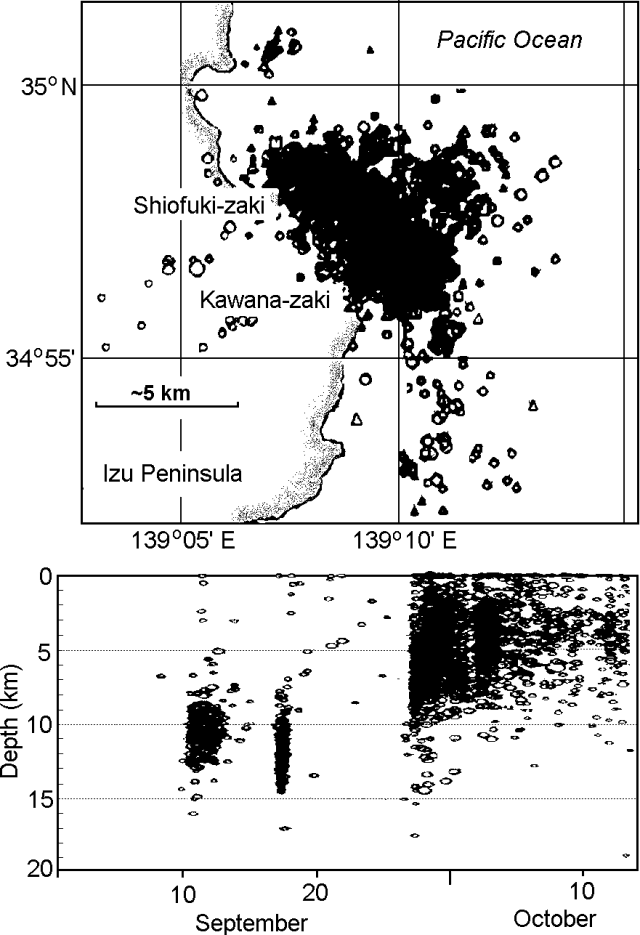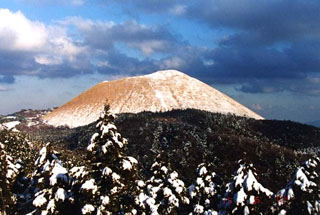Report on Izu-Tobu (Japan) — September 1995
Bulletin of the Global Volcanism Network, vol. 20, no. 9 (September 1995)
Managing Editor: Richard Wunderman.
Izu-Tobu (Japan) Migrating seismic swarms
Please cite this report as:
Global Volcanism Program, 1995. Report on Izu-Tobu (Japan) (Wunderman, R., ed.). Bulletin of the Global Volcanism Network, 20:9. Smithsonian Institution. https://doi.org/10.5479/si.GVP.BGVN199509-283010
Izu-Tobu
Japan
34.9°N, 139.098°E; summit elev. 1406 m
All times are local (unless otherwise noted)
On 11-12 and 18 September micro-earthquake swarms occurred offshore near Cape Kawana-zaki, in an area adjacent Ito City on the E coast of the Izu Peninsula (figure 15). After that, few micro-earthquakes took place until late September. An intense swarm began in late September; focal depths shallowed as the swarm shifted N and lay off Cape Shiofuki-zaki (figure 15). Personnel at Ajiro Weather Station, 9 km NNW of the source, felt 33 shocks. Kamata seismic station in Ito City, 5 km SW of the source, registered a total of 3,608 shocks. Two tiltmeters near the coast of Ito Peninsula showed rapid changes in tilt; volume strain meters around the volcano recorded compression.
 |
Figure 15. Izu-Tobu epicenter map (top) and plot of focal depths versus time for September through 16 October 1995 (bottom). Courtesy of JMA. |
Geological Summary. The Izu-Tobu volcano group (Higashi-Izu volcano group) is scattered over a broad, plateau-like area of more than 400 km2 on the E side of the Izu Peninsula. Construction of several stratovolcanoes continued throughout much of the Pleistocene and overlapped with growth of smaller monogenetic volcanoes beginning about 300,000 years ago. About 70 subaerial monogenetic volcanoes formed during the last 140,000 years, and chemically similar submarine cones are located offshore. These volcanoes are located on a basement of late-Tertiary volcanic rocks and related sediments and on the flanks of three Quaternary stratovolcanoes: Amagi, Tenshi, and Usami. Some eruptive vents are controlled by fissure systems trending NW-SE or NE-SW. Thirteen eruptive episodes have been documented during the past 32,000 years. Kawagodaira maar produced pyroclastic flows during the largest Holocene eruption about 3,000 years ago. The latest eruption occurred in 1989, when a small submarine crater was formed NE of Ito City.
Information Contacts: Volcanological Division, Seismological and Volcanological Department, Japan Meteorological Agency (JMA), 1-3-4 Ote-machi, Chiyoda-ku, Tokyo 100 Japan.

